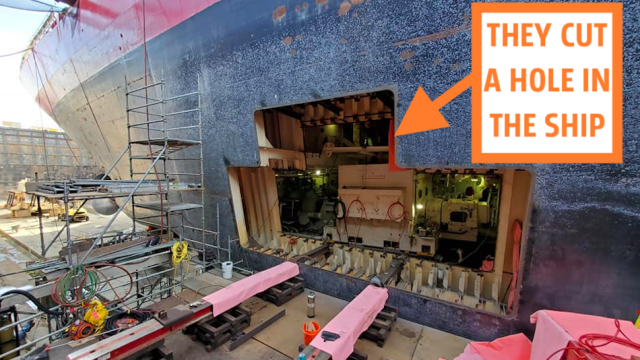A fire broke out on the United States Coast Guard’s largest ship last summer, destroying one of the vessel’s enormous electric motors. Now the Coast Guard, one of the five service branches of the U.S. military, is replacing that motor and documenting the entire process, which involves cutting a giant hole in the hull. The whole thing is fascinating. Check it out.
The USCGC Healy is the biggest and most advanced ship in the Coast Guard’s fleet, capable of breaking 1.37 m of ice at three knots, and it’s equipped with over 372 sq m of laboratory space. On August 18, during an Arctic research mission, a fire broke out and ruined a propulsion motor, forcing the research ship to return to Washington State. The Coast Guard breaks down what happened in its memo:
The Healy was 60 nautical miles off of Seward, Alaska, en route to the Arctic when an electrical fire was reported at 9:30 p.m. A fire team disconnected the affected motor, and the fire was confirmed extinguished by 9:56 p.m. The cause of the fire is currently unknown.
[…]
Due to the fire, Healy’s starboard propulsion motor and shaft are no longer operational, and the ship is transiting back to its homeport in Seattle for further inspection and repairs.
Luckily, there were no injuries reported, and there’s still no word on the cause of the fire. What is known is that the Coast Guard will have to replace that broken starboard propulsion motor. It is one of the electric motors that spin the propellers, powered by juice from generators spun by the ship’s diesel engines. “This Design,” the Coast Guard writes, “protects the engines from variations in shaft speeds inherent to ice operations.”
The Coast Guard’s Facebook page for Healy describes the research ship’s powertrain setup and why it uses 26,100 kW (combined) electric motors instead of the diesel engines to spin the props:
Healy’s powerplant consists of four engines, which power generators, which in turn generate the electricity to operate the motors which turn the shafts and propellers. Healy can cruise with all four mains running, or as few as one. Bringing extra engines online increases not only our speed, but our icebreaking power.
One of the two propulsion motors, the starboard one, along with its shaft, is now out of commission. The good news is that the Coast Guard has a spare, though it has been sitting for the roughly 23 years that the boat has been in service.
Per the Coast Guard, the spare motor was built around the time the ship was built and has been sitting in a building specially erected for the enormous propulsion device. It’s pretty awesome:
“After 23 years in storage, our replacement motor is on the way to meet us in Mare Island via the Panama Canal. Good thing they created a spare when they built the ship,” the caption in the Instagram post (which shows the spare motor being removed from its longtime enclosure) reads.

As of August 31, the Coast Guard had parked the Healy in its home port of Seattle, and engineers were taking a peek at the damage. By October 18, the ship was in the Mare Island Dry Dock in Vallejo, California, (shown below) ready to undergo repairs. “Because the motor is on the starboard side,” the Coast Guard notes on an Instagram post, “you can see how closely we are docked on the port side, to create enough clearance to remove the motor.”

The Coast Guard shows off this parking job in its post below:
Here’s how tight things are on the port side:
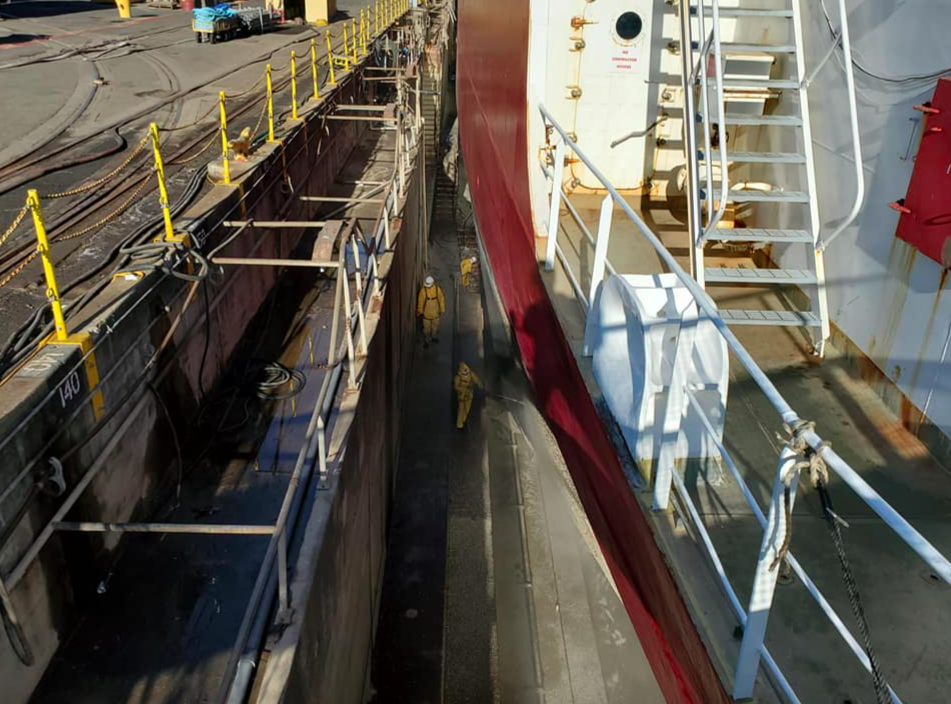
Here’s another glance:
A later Instagram post shows the culprit that has the ship docked in the first place: the starboard propulsion motor. It is enormous.
To remove that motor requires the Coast Guard to carefully inspect the hull. “Before any cutting can be done, the hull needs to be cleared of barnacles and other biofouling,” the Coast Guard writes on its Instagram page, “and then inspected for damage.”
The image below shows a worker cleaning the hull. “Before opening up the hull, the barnacles and other marine life, known as ‘biofouling’ need to be removed” the Coast Guard writes. “Pressure washing gets the job done without negatively affecting the hull.”
Look at how well that pressure washer is clearing away all of that biofouling:
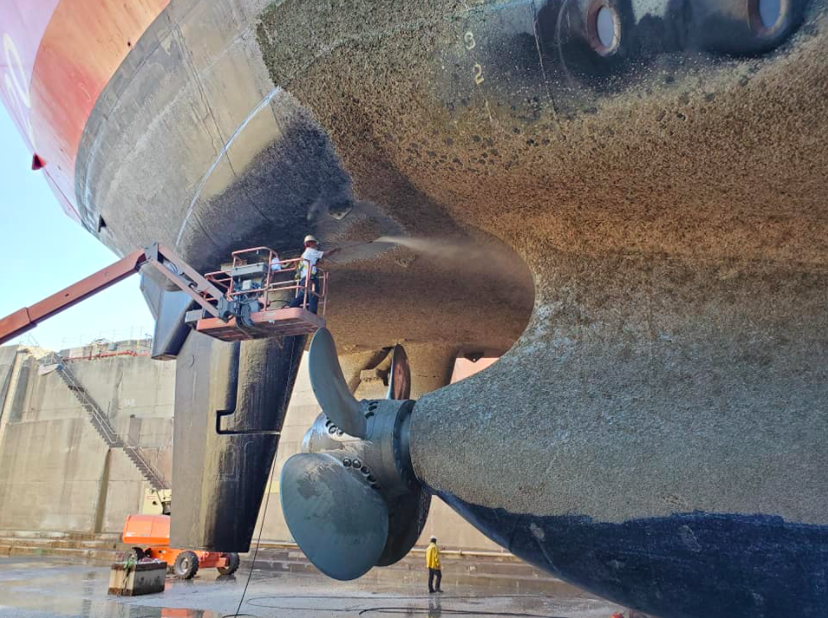
After the cleaning, the Coast Guard inspected the hull and assessed “the resilience of the paint.” Here’s an image showing the inspection process; in this case, it’s the starboard prop that’s being scrutinised:
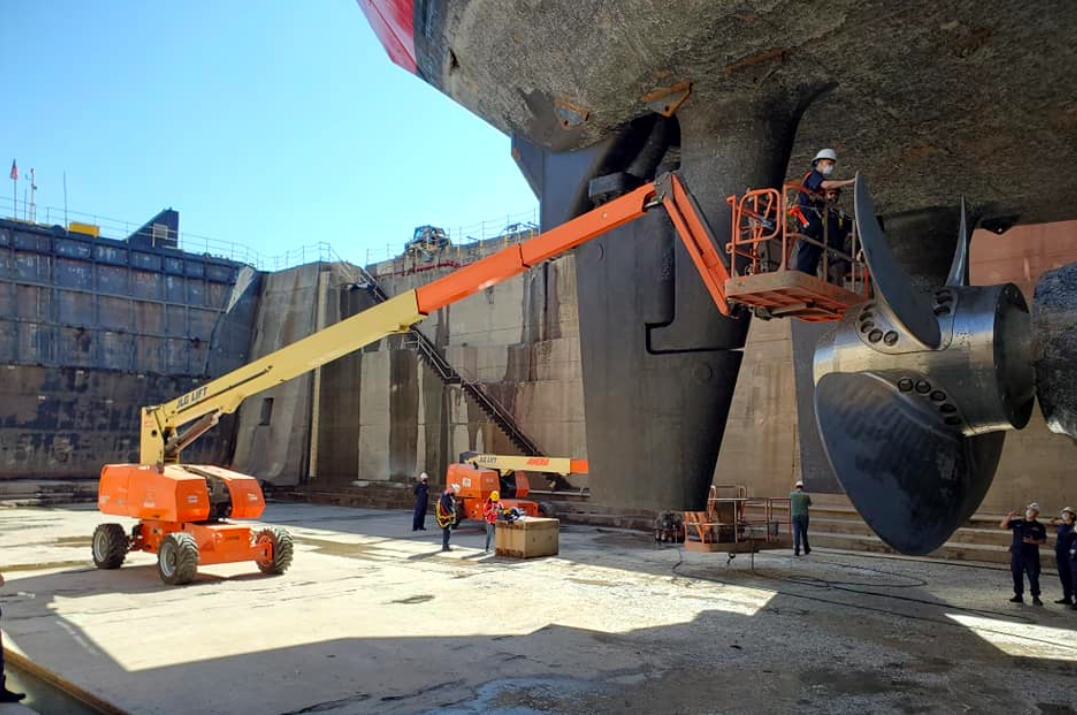
With cleaning and inspection done, contractors were ready to cut the hull. But before they did that, they covered up the working motor with plastic as they began dismantling the starboard electric motor — a job that involved “electrical and mechanical disconnections and frame cutting,” per the Coast Guard.
In November, the huge replacement motor that had been sitting in its own building arrived on a barge:
The Coast Guard’s post shows technicians using cutting torches to slice a hole into the hull from inside of the ship, though cutting has to be done from the outside as well.
“There is no hatch we can open to remove the starboard propulsion motor: the ship was built around it,” the Coast Guard writes, “so we need to cut the hull. Contractors are at work inside and outside creating the opening.”
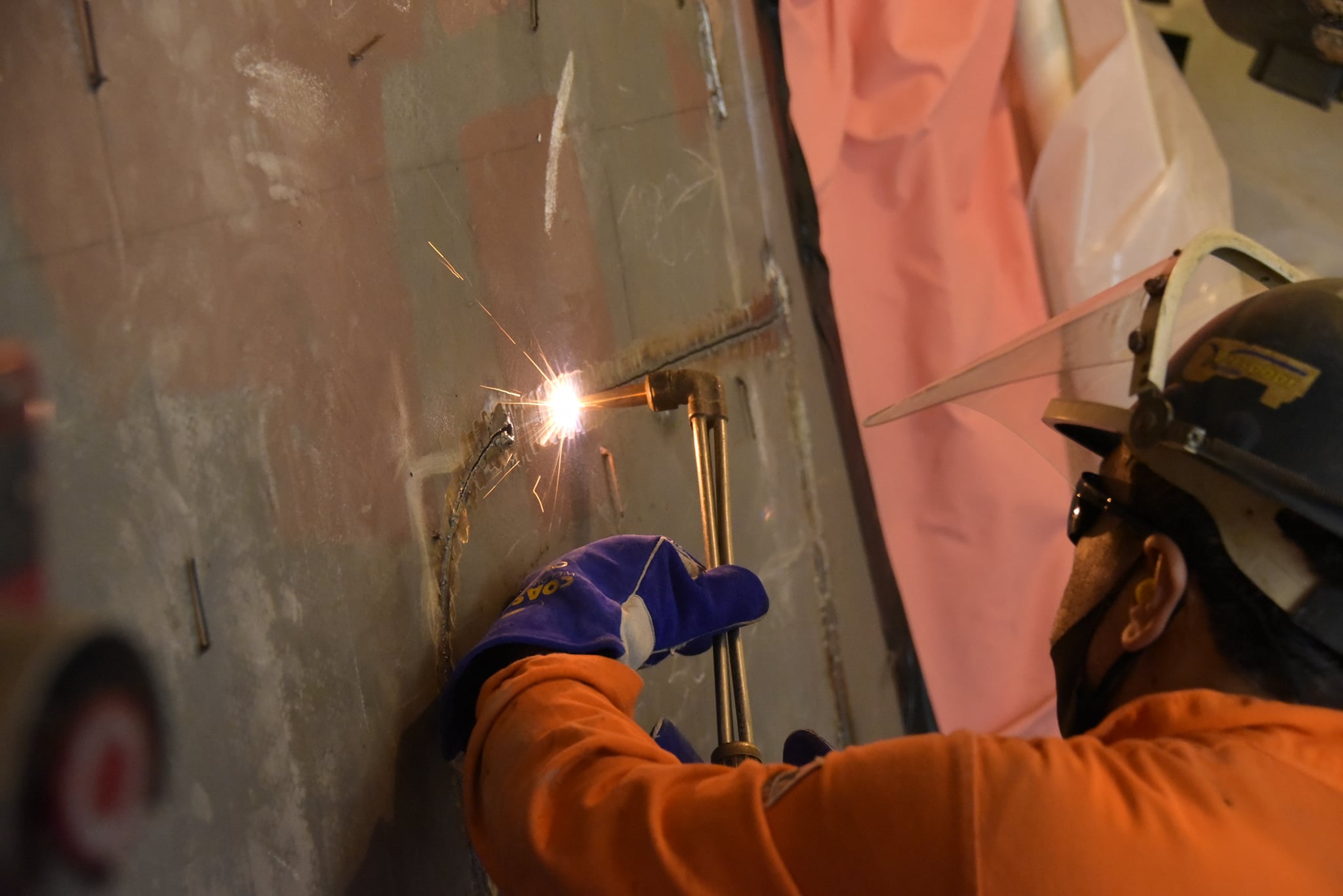
The result of all that cutting? A huge aperture in the ship that reveals the faulty motor:
At the base of the photo below, you can see the large chunk of hull that contractors cut out:
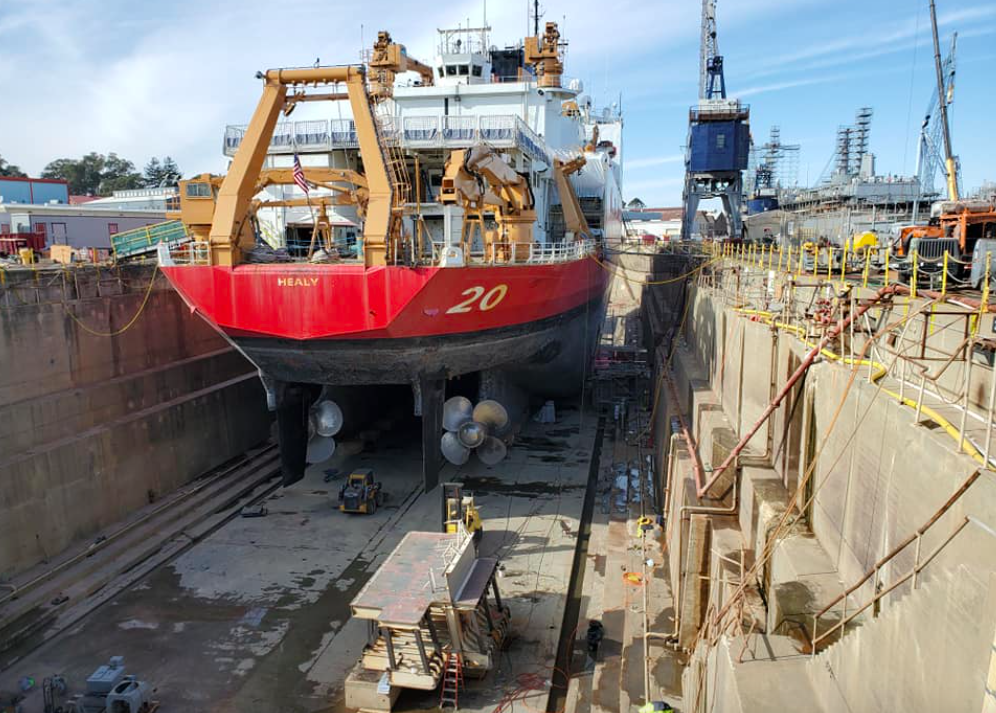
With rigs in place to move the huge propulsion motors, the next step in the motor-swap process is for a crane to do the heavy lifting.
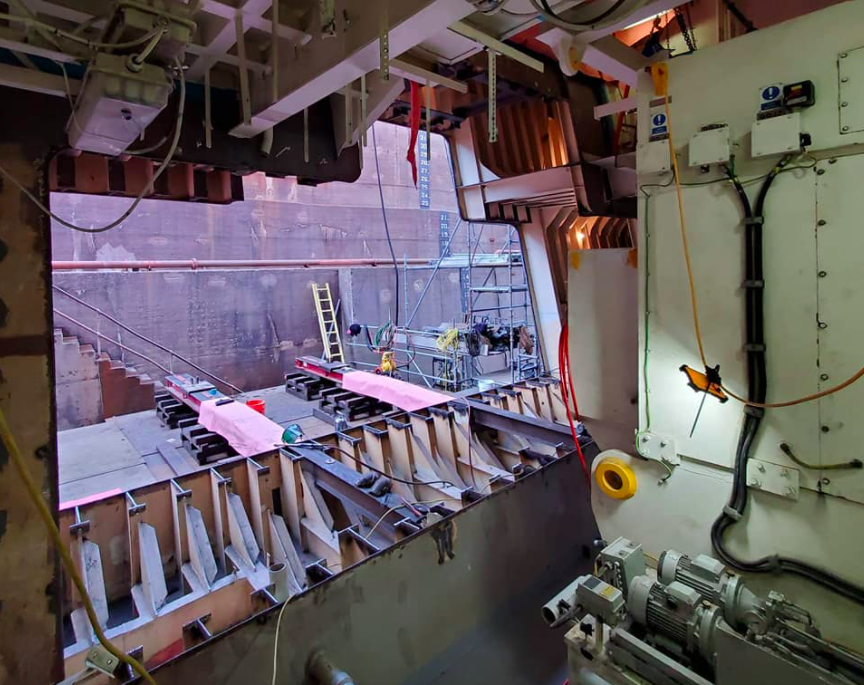
That’s where things stood as of yesterday, per the Healy’s latest Facebook post. Definitely keep an eye on that page for updates on this fascinating process.
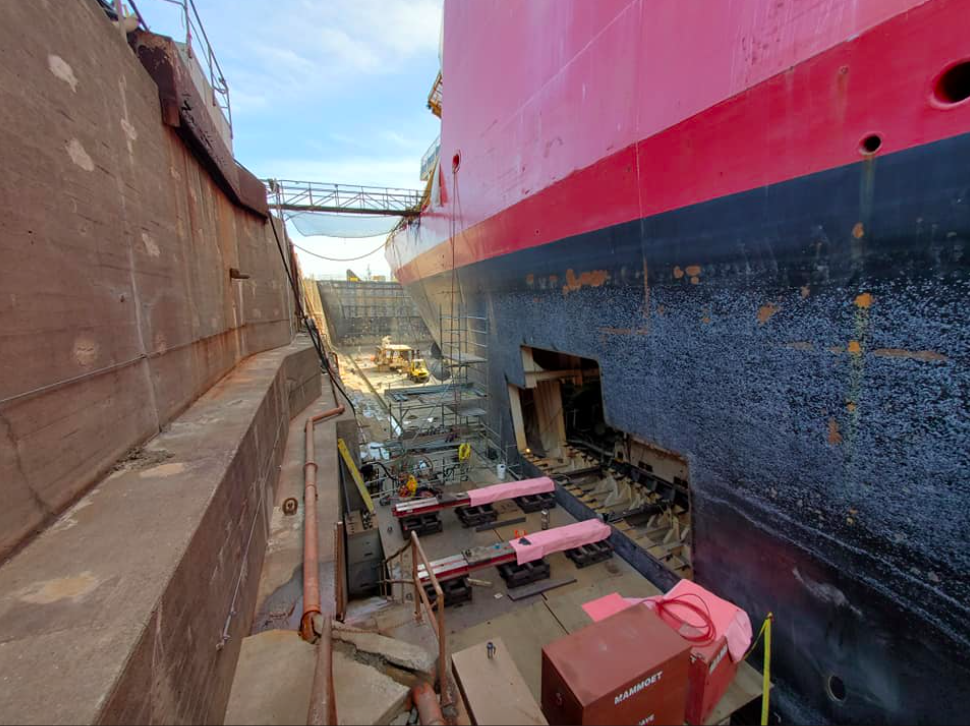
Cutting a hole in the hull of a ship is pretty much standard procedure for conducting a powertrain swap on a large vessel. The video below shows a similar operation taking place on a cruise ship:
The sheer amount of effort going into a ship motor swap is just fascinating. And here I thought replacing the heavy AMC 360 V8 in my Jeep Cherokee Golden Eagle was tough.
